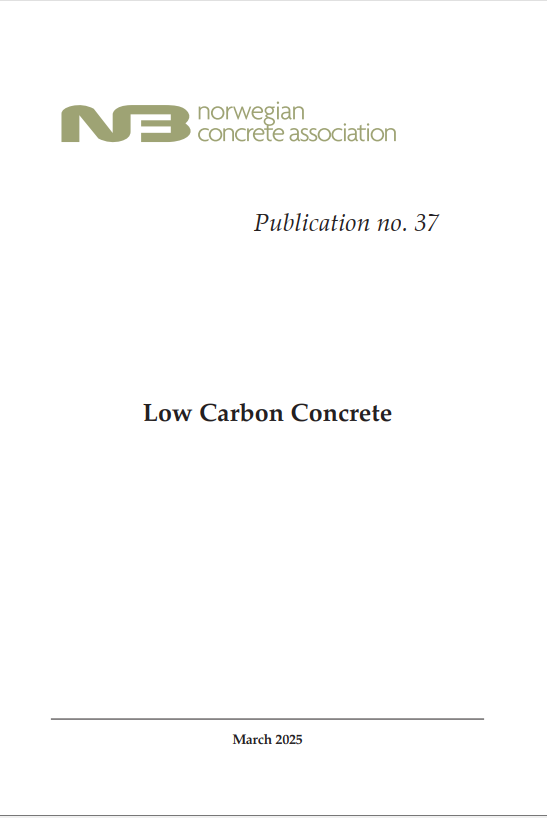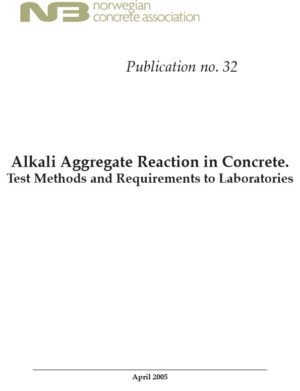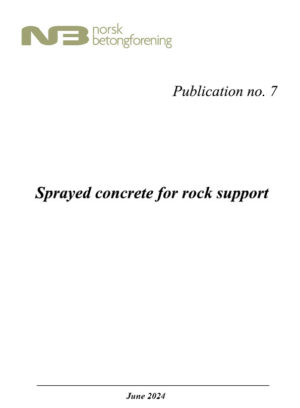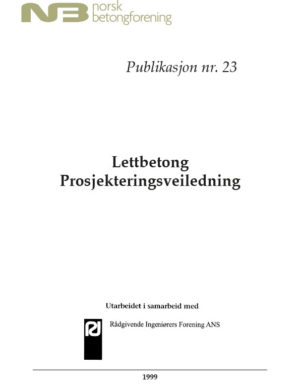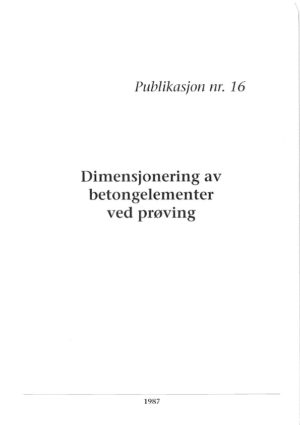Beskrivelse
The Norwegian Concrete Association’s publication no. 37 Low carbon concrete (NB37) was first published in 2015. The publication has become a reference document for projects with environmental ambitions and requirements for greenhouse gas emissions. It only deals with the concrete material, not the reinforcement.
The publication has two main parts:
- Specification
- Guidance
The specification part provides class limits with specific requirements for greenhouse gas emissions for low carbon concrete, differentiated by the strength classes of concrete, and all necessary prerequisites for the use and documentation of the low carbon classes. The guidance part provides information on why cement and concrete production results in large greenhouse gas emissions, what is being done to limit emissions, what limitations standards and regulations impose on greenhouse gas mitigation measures, information on tools that can be used to document greenhouse gas measures, how the concrete composition can be adapted, availability in the market, and what technical properties we can expect from low carbon concrete.
When selecting a low carbon class for each structural part, the designer must first check the local availability of low carbon concrete. The selected low carbon classes provide realistic generic values for greenhouse gas emissions, which can be included in a preliminary greenhouse gas inventory. It is then up to the contractor and concrete supplier to document that the correct low carbon grade has been achieved using environmental product declarations (EPDs). The EPDs will also be used to document the final greenhouse gas accounting for the concrete structure.
Since the publication of the document in 2015, the construction industry’s level of ambition, knowledge, market situation, and documentation tools have developed rapidly. Therefore, the publication has been revised several times. This translation is in accordance with the February 2024 revision. In this revision, the industry reference has been updated to reflect the positive development in greenhouse gas emissions in the Norwegian cement and concrete industry. The class boundaries of Low Carbon B are aligned with the new industry reference. Class limits for Low Carbon Plus and Low Carbon Extreme have also been introduced for the lowest strength classes. Some of the class boundaries have received minor adjustments. Some editorial changes have also been made, including moving the definition and requirements for low carbon sprayed concrete forward to the specification section of the publication.
The document will likely be revised again shortly, so it’s important to use the latest version when specifying low carbon concrete.
The 2024 revision has been carried out by:
Sverre Smeplass, Skanska Norge AS
Tom Fredvik, Heidelberg Materials Sement Norge AS
Lars Busterud, Schwenk Norge AS
Øyvind Sæther, Unicon AS
Britt Blom Marstrander, Spenncon AS

